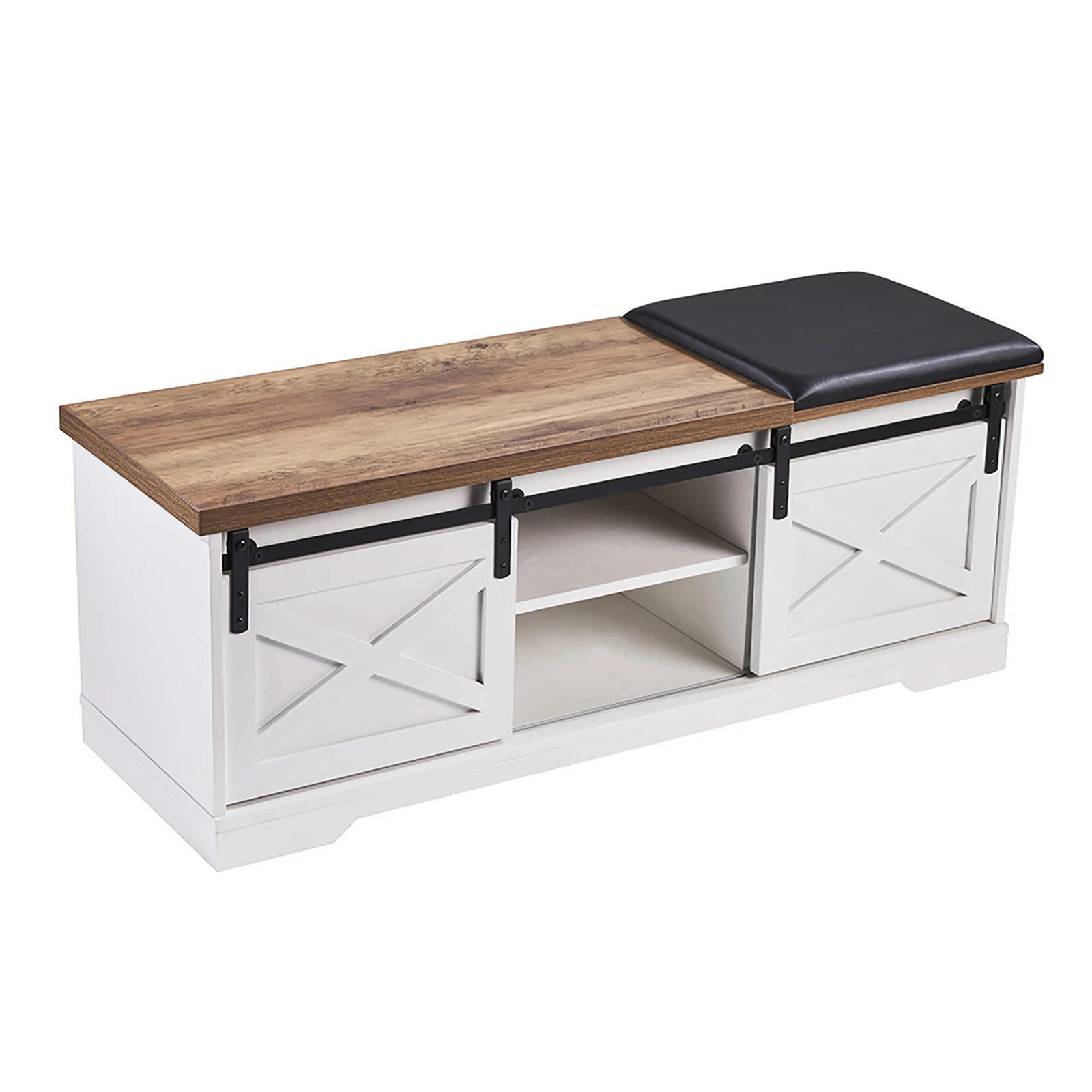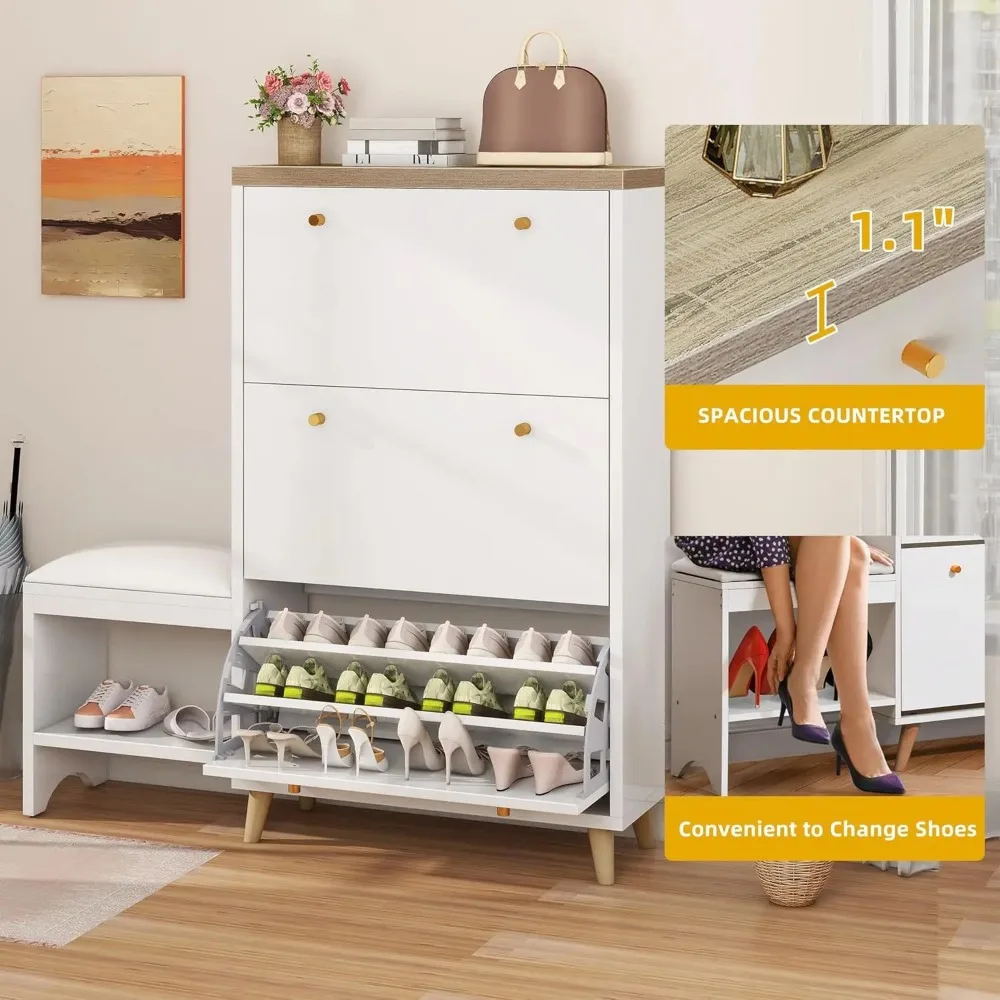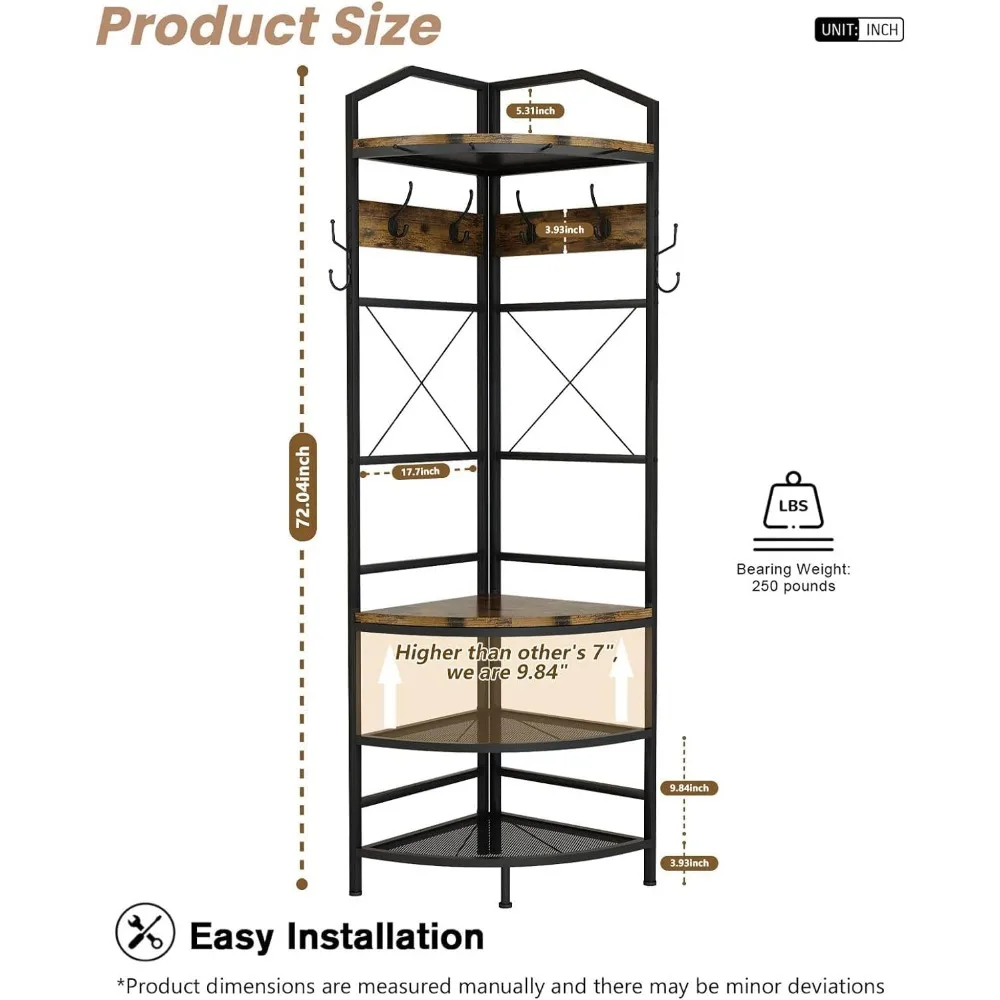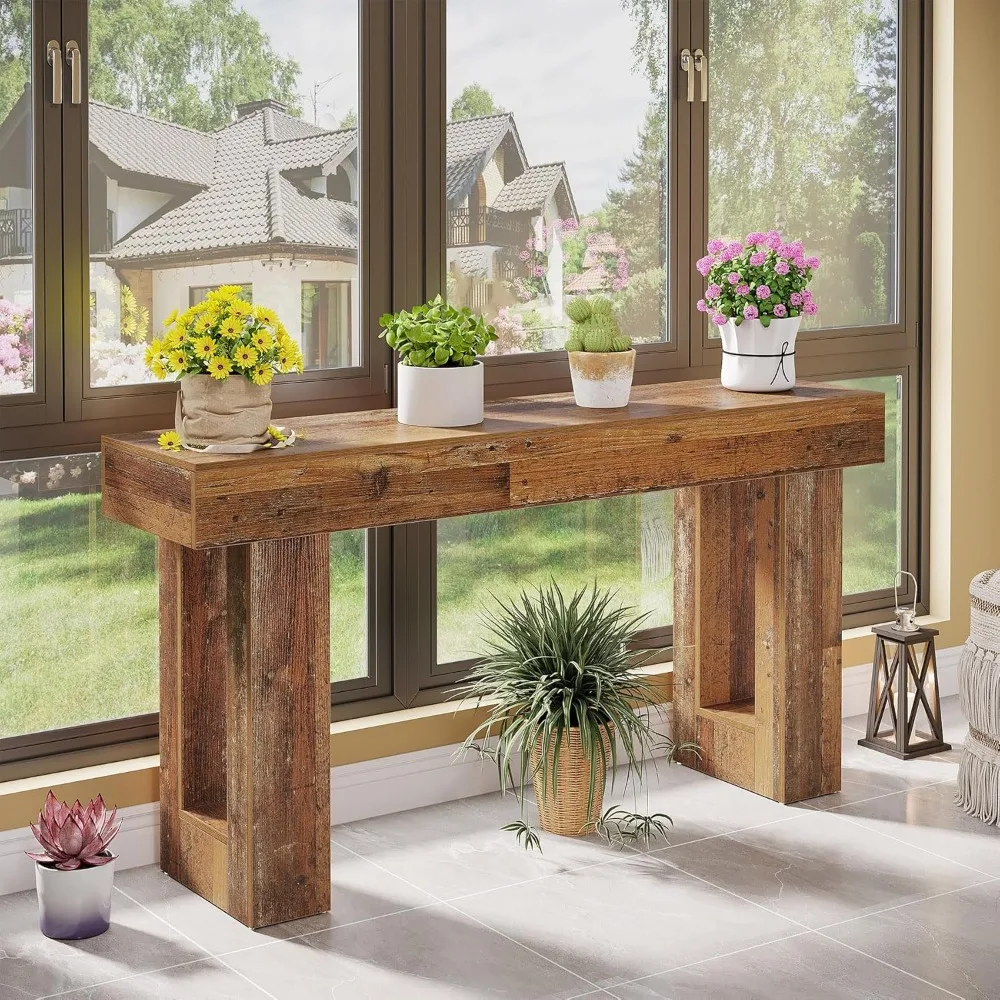The Small Foyer Challenge: Maximizing Limited Entry Space
The apartment foyer – typically ranging from just 20 to 50 square feet – serves as both the first impression of your home and a critical transition space between the outside world and your private sanctuary. Despite its modest dimensions, this small area carries significant responsibility in your daily life.
Small apartment foyers present several common challenges:
- Limited floor space making it difficult to incorporate essential storage
- Awkward layouts with narrow passages or irregular corners
- Tendency to accumulate clutter (keys, mail, bags, shoes)
- Difficulty balancing functionality with aesthetic appeal
- Accommodating multiple household members’ needs in a confined area
According to housing surveys, urban apartment entryways have shrunk by nearly 30% over the past two decades, with the average foyer now measuring just 4 feet by 6 feet in newer constructions. This reduction in space demands more strategic furniture choices than ever before.
The good news? With thoughtful planning and smart furniture selection, even the most compact foyer can transform into an organized, welcoming space. By embracing multi-functional pieces, vertical storage solutions, and space-efficient designs, your small foyer can overcome its spatial limitations while enhancing your home’s functionality and visual appeal. Many compact storage benches for small apartments provide excellent foundations for building an efficient entryway system that maximizes every square inch.
Essential Steps Before Selecting Foyer Furniture
Before rushing to purchase furniture for your small foyer, take these critical preparatory steps to ensure you select pieces that truly optimize your space:
Measure accurately: Record the exact dimensions of your foyer, including width, length, and ceiling height. Don’t forget to note door swing clearances, electrical outlets, and any architectural obstacles like radiators or built-in features. Remember to measure the width of your entry door to ensure furniture can be delivered into the space.
Identify your functional priorities: List the activities that typically occur in your foyer and the items that need storage. Do you need coat storage for multiple household members? Shoe organization for daily rotation? A place to sort mail? A surface for keys and wallets? Rank these needs based on your household’s specific routines.
Analyze traffic patterns: Observe how people naturally move through your entry space. Is it a straight path, or do people turn immediately? Are multiple doorways accessed from this area? Ensure any furniture placement maintains at least 30-36 inches of clear pathway for comfortable movement.
Consider existing design elements: Note your apartment’s architectural style, color scheme, flooring material, and lighting conditions. Your furniture selections should complement these elements while maximizing functionality.
Establish your budget framework: Determine your overall budget, but also consider the value of investing in quality multi-functional pieces that might replace the need for multiple single-purpose items.
Understanding the art of organizing small apartments with benches can provide valuable insight into maximizing both storage and seating in limited entry spaces. By completing these essential planning steps, you’ll avoid common pitfalls like purchasing furniture that’s too large or fails to address your most critical needs.
Multi-Functional Console Tables: Slim Profiles with Maximum Impact
Console tables offer the perfect solution for small foyers thanks to their slim profiles, typically extending just 10-15 inches from the wall while providing significant functionality. Their minimal footprint makes them ideal for narrow passages where every inch counts.
For maximum space efficiency in small apartment foyers, consider these strategic console table options:
Wall-mounted floating consoles eliminate floor footprint entirely, creating an airy feel while providing essential surface area. These work particularly well in extremely tight spaces where floor clearance is critical.
Narrow consoles with built-in storage combine surface display space with drawers or shelves below. Look for models with 2-3 drawers for organizing small essentials like keys, sunglasses, and mail.
Half-moon or demilune tables feature a curved front edge that reduces corners in tight spaces, making them perfect for narrow passageways or awkward transitional areas where flow is important.
To maximize your console table’s functionality:
– Use the surface for both decorative elements (like a small lamp or plant) and practical items (key dish or mail sorter)
– Store frequently used items in drawers within easy reach
– Utilize the space beneath for baskets that contain seasonal accessories or shoes
– Consider models with integrated features like key hooks or charging stations
When selecting materials for foyer console tables, consider durability in this high-traffic area. Solid wood construction offers longevity, while metal accents add resilience against daily wear. For small spaces, lighter finishes or glass components can help maintain visual openness.
Many homeowners find that narrow entryway benches pair perfectly with slim console tables in small foyers, creating complementary zones for both storage and seating without overwhelming the limited floor space.
Vertical Storage Solutions: Maximizing Height When Floor Space Is Limited
When floor real estate comes at a premium, the smart strategy is to build upward. Vertical storage solutions take advantage of often-overlooked wall space, dramatically expanding your foyer’s storage capacity without impinging on precious floor area.
Wall-Mounted Storage Options
Floating shelves installed at strategic heights provide display and storage space with zero floor footprint. Install multiple shelves in a vertical arrangement to maximize capacity.
Corner shelving systems utilize often-wasted corner spaces, creating triangular storage perfect for decorative items or small baskets.
Wall-mounted coat racks with integrated shelving combine hanging storage with horizontal surfaces, ideal for keys, mail, and decorative elements.
Grid panel systems and pegboards offer customizable storage that evolves with your needs, allowing you to reposition hooks, small shelves, and accessories.
Installation Considerations
Renters can utilize tension rod systems, over-door organizers, and removable adhesive hooks that leave no damage. Command hooks rated for 5-8 pounds can support light coats and bags without drilling.
Homeowners have more flexibility with permanent installations, though it’s essential to locate wall studs or use appropriate wall anchors. For maximum stability, ensure shelving is properly anchored to support expected weight.
Strategic Placement Tips
- Install storage at varying heights to accommodate different household members, including lower hooks for children
- Group similar items together (keys and mail in one zone, outerwear in another)
- Keep frequently used items between eye and waist level for easy access
- Reserve higher storage for seasonal or less frequently used items
Implementing creative apartment entryway hacks can dramatically transform even the tiniest foyer into a highly functional space. The key is thinking vertically rather than horizontally, using walls as your primary storage canvas.
Smart Seating Options: Benches and Storage Ottomans
Incorporating seating into a small foyer serves dual purposes: providing a comfortable spot for putting on shoes and creating additional hidden storage. The key is selecting pieces that maximize functionality while minimizing their footprint.
Space-Efficient Seating Comparison
| Seating Type | Typical Footprint | Storage Capacity | Best For |
|---|---|---|---|
| Storage Bench with Lift Top | 36”W × 16”D × 18”H | 4-6 cubic feet | Hiding bulky items, seasonal gear |
| Shoe Storage Bench | 36”W × 14”D × 18”H | 6-8 pairs of shoes | Daily footwear organization |
| Nested Ottomans | 18”W × 18”D × 16”H (largest) | Varies by design | Flexible, occasional extra seating |
| Corner Bench | 30”W × 30”D × 18”H | 3-5 cubic feet | Maximizing awkward corner spaces |
For small apartment foyers, benches between 30-42 inches wide typically offer the ideal balance between functionality and space efficiency. When placing your bench, ensure at least 24 inches of clearance in front to allow comfortable seating without blocking traffic flow.

Consider these strategic placement options:
– Position against the wall opposite your entry door to create balance
– Place beneath a window if your foyer has one, maximizing natural light
– For extremely narrow entries, look for slim-profile benches under 14 inches deep
Proper bench selection creates an organizational anchor point for your entry while providing crucial seating. For more specific options tailored to apartment living, exploring apartment-friendly storage bench ideas can help you find the perfect balance between seating and storage for your unique space constraints.
Mirror Magic: Creating Depth and Doubling Functionality
Mirrors perform double duty in small foyers – they create the illusion of expanded space while serving practical functions. Strategic mirror placement can transform a cramped entryway into one that feels open and welcoming.
Multi-Functional Mirror Options
- Mirrors with integrated storage feature hidden compartments behind the reflective surface, perfect for jewelry, keys, or small valuables
- Mirror-front cabinets conceal deeper storage while maintaining a sleek appearance
- Framed mirrors with hooks combine reflection with practical hanging space
- Full-length mirrors with lean-against-wall design require no installation while providing head-to-toe visibility
For optimal visual expansion, position your mirror to reflect light sources or interesting architectural elements rather than blank walls. The ideal placement is typically on the wall opposite or adjacent to your entry door, creating an immediate sense of openness upon arrival.
When selecting mirror size, follow these proportional guidelines:
– For standard 8-foot ceilings, mirrors should be approximately 30-36 inches tall
– Center the mirror at eye level (approximately 57-65 inches from the floor to the center)
– For narrow foyers, choose a mirror that’s proportional to the wall width (typically 70-80% of wall width)
The reflective properties of mirrors also enhance natural and artificial light, making your foyer appear brighter and more welcoming. This illumination boost is especially valuable in apartment foyers that lack natural light sources.
Incorporating multi-use furniture in small foyers alongside strategically placed mirrors creates a harmonious balance of functionality and visual spaciousness, maximizing both the practical and aesthetic potential of limited entry areas.
Shoe Storage Solutions: Containing the Clutter
Shoe clutter can quickly overwhelm a small foyer, making efficient storage solutions essential. The average household accumulates 2-4 pairs of shoes per person in regular rotation at the entryway, creating a significant organizational challenge in limited spaces.
Space-Efficient Shoe Storage Options
Vertical shoe cabinets with tilting compartments offer the highest capacity-to-footprint ratio, storing 12-20 pairs in a cabinet just 8-10 inches deep. These slim cabinets often resemble console tables when closed, maintaining a clean appearance.
Under-bench shoe shelves or compartments maximize dual functionality by utilizing the otherwise wasted space beneath seating. Look for benches with either open shelving or pull-out drawers specifically designed for footwear.
Over-door organizers require zero floor space while storing 12-24 pairs, making them ideal for extremely limited entries. Select sturdy versions with reinforced pockets for maximum longevity.
Stackable and modular cubbies allow customization based on your specific space and can grow or reconfigure as needs change.

For high-traffic areas, consider these practical maintenance tips:
– Incorporate a small washable entry rug to catch dirt before it reaches shoe storage
– Select shoe storage with solid bottoms to contain dirt and moisture
– For seasonal rotation, store off-season footwear in under-bed containers or closet organizers
The key to successful shoe management lies in creating dedicated storage that accommodates your specific footwear profile while maintaining visual order. For specialized solutions that combine seating with shoe organization, exploring shoe bench entryway options provides valuable insights into integrated systems designed specifically for limited entryway spaces.
Creative Small-Space Foyer Layouts: Real-World Solutions
Translating furniture concepts into functional arrangements requires creative adaptation to your specific space constraints. Here are three real-world scenarios with tailored solutions:
Scenario 1: The Micro Foyer (under 15 square feet)
When dealing with extremely limited space, prioritization becomes essential:
- Mount a 24” × 15” floating shelf at counter height to serve as a minimal landing strip for keys and mail
- Install a wall-mounted coat rack with 4-6 hooks above the shelf to handle outerwear
- Place a narrow shoe cabinet (24” wide × 12” deep) against the adjacent wall if space permits
- Utilize a small mirror (18” × 24”) above the shelf to create depth and functionality
- Consider door-mounted solutions when wall space is unavailable
- Use vertical space from floor to ceiling with staggered storage elements
Scenario 2: The Narrow Corridor Entry
Long, narrow entries require careful attention to traffic flow:
- Position a slim console table (30-36” wide × 10-12” deep) against the longest wall
- Mount floating shelves or hooks above the console for additional storage
- Use a runner rug (2’ × 4’ or 2’ × 6’) to define the space and add warmth
- Incorporate a mirror on the wall opposite the console to create visual width
- Select furniture with legs rather than solid bases to maintain visual openness
- Create a linear organization system that progresses logically (outer layers like coats first, then inner layers like keys and wallets)
Scenario 3: The Open-Concept Entry
When your foyer blends directly into living areas without architectural definition:
- Use a double-sided bookcase (36-48” wide × 12-15” deep) as a room divider to create a visual boundary
- Place a bench perpendicular to the entry wall to define the transition zone
- Establish consistent design elements (specific color, material, or style) that differentiate the entry from adjacent spaces
- Create a cohesive “entry zone” with a dedicated area rug
- Position furniture to naturally guide traffic flow from entrance to main living areas
- Consider vertical elements like plants or floor lamps to create height definition
Implementing creative furniture layouts for open apartment entries helps establish functional zones without requiring architectural changes, making these strategies particularly valuable for renters who cannot modify their spaces permanently.
Design Elements That Enhance Small Foyer Functionality
Beyond furniture selection, thoughtful design elements dramatically impact how your small foyer functions and feels. These details transform a basic entry into an efficient, welcoming space.
Strategic Lighting Solutions
Proper illumination serves both practical and aesthetic functions in small foyers:
– Wall sconces at eye level provide ambient lighting without consuming valuable table or floor space
– Motion-sensor lights offer hands-free operation when entering with arms full
– Mirrors positioned to reflect light sources effectively double your illumination
– Consider LED tape lighting under shelving for subtle guidance and ambient glow
Color and Material Considerations
Your selection of finishes significantly impacts spatial perception:
– Light, neutral wall colors (soft whites, pale grays, light beiges) visually expand the space
– Glossy or semi-gloss paint finishes reflect more light than matte options
– Continuous flooring from foyer to adjacent rooms creates visual flow and perceived spaciousness
– Durable, easy-clean materials like washable paint, sealed wood, and stain-resistant fabrics withstand entryway traffic
Functional Accessories
Small additions provide significant organizational impact:
– Dedicated mail sorters prevent paper clutter buildup
– Key hooks or magnetic strips keep essentials visible and accessible
– Small trays corral loose items like sunglasses and transit cards
– Umbrella stands with drip trays contain moisture from wet weather gear
Incorporating weather-appropriate elements seasonally (boot trays in winter, umbrella stands in rainy seasons) keeps your foyer functioning optimally year-round. Many homeowners find that shoe-friendly seating options for foyers provide the perfect balance between comfort and practicality in these multifunctional spaces.
Transforming Your Foyer: Implementation Strategy and Maintenance
Creating a functional small foyer requires both thoughtful implementation and consistent maintenance. Follow this strategic approach to transform your entryway:
Implementation Strategy
Start with the foundation piece – typically a slim console table, narrow bench, or vertical storage unit that addresses your primary storage need
Add complementary storage that addresses secondary functions without duplicating capabilities
Incorporate multi-purpose items that serve both functional and aesthetic roles (decorative baskets that store items, mirrors with hooks)
Test the layout for several days, making note of any friction points in your daily routine
Adjust and refine based on actual usage patterns rather than theoretical needs
Maintenance Routine Checklist
- Daily (2-3 minutes)
- Return items to designated homes
- Sort mail immediately upon entry
Hang coats and bags on proper hooks
Weekly (10 minutes)
- Wipe down high-touch surfaces
- Vacuum or sweep flooring
Return any misplaced items to proper locations
Seasonally (30 minutes)
- Rotate weather-appropriate gear (swap winter accessories for summer items)
- Deep clean flooring and baseboards
- Evaluate storage needs and adjust as necessary
The key to maintaining an organized foyer lies in creating intuitive systems that are easy to maintain. When each item has a logical, accessible home, household members naturally follow the organizational structure. For additional strategies to maintain organization in limited entry spaces, exploring small entryway bench solutions provides valuable insights into creating sustainable systems for compact areas.
Premium Space-Saving Foyer Furniture: Investment Considerations
When selecting furniture for your small apartment foyer, considering quality and longevity can actually save money long-term. Understanding what constitutes quality construction helps identify pieces worth their investment:
Quality Markers for High-Traffic Furniture
- Material integrity: Solid wood construction or high-quality engineered wood with proper sealing for moisture resistance
- Joinery techniques: Dovetail or mortise-and-tenon joints rather than staples or glue alone
- Hardware quality: Soft-close hinges, full-extension drawer slides, and solid metal (not plastic) components
- Finish durability: Multiple coating layers with proper sealing to withstand daily wear
- Weight capacity: Sturdy construction supporting at least 250-300 pounds for seating pieces
Quality multi-functional pieces often provide better long-term value by replacing the need for multiple items. For example, a well-made storage bench with integrated shoe storage serves three functions (seating, general storage, and shoe organization) in the footprint of one piece.
Consider these cost-efficiency factors:
– Price-per-function (total cost divided by number of functions served)
– Expected lifespan (quality pieces may last 10+ years versus 2-3 years for budget items)
– Adaptability to different spaces if you move to another apartment

For uniquely challenging spaces, exploring specialized solutions like corner hall trees can provide optimized functionality for awkward architectural features while maximizing storage in previously underutilized areas. These purpose-built pieces often deliver superior space efficiency compared to standard furniture adapted to unusual spaces.
Beyond Traditional Foyer Furniture: Innovative Space-Saving Alternatives
When conventional furniture options don’t adequately address extremely challenging spaces, thinking beyond traditional categories can yield remarkable solutions:
Furniture Hybrids and Unconventional Approaches
- Wall-mounted drop-leaf tables that fold flat against the wall when not needed, providing occasional surface area with zero permanent footprint
- Floating drawer units that provide storage without base cabinets, creating an illusion of more floor space
- Tension rod systems that create adjustable vertical storage between floor and ceiling without permanent installation
- Magnetic wall panels that hold metal accessories, creating customizable organization systems
- Furniture with concealed tech integration featuring hidden charging stations and smart home control centers
Creative Repurposing Strategies
Look beyond furniture specifically marketed for entryways:
– Narrow kitchen carts repurposed as mobile entry organizers with wheels
– Bathroom vanities adapted as console tables with superior storage
– Closet organization systems modified for entryway use
– Bedroom dressers reimagined as entry storage with drawer dividers
The most innovative small-space solutions often emerge from combining elements across different furniture categories or adapting pieces intended for other rooms. The key is evaluating furniture based on function and dimensions rather than marketing categories.
For those seeking versatile storage options that maximize limited entry space, exploring entryway benches with storage reveals adaptable solutions that combine seating comfort with organizational efficiency.
As apartment sizes continue to shrink in urban areas, manufacturers are responding with increasingly clever space-saving designs. By embracing both traditional furniture pieces optimized for small spaces and innovative alternatives that challenge conventional categories, even the most compact apartment foyer can become an efficient, welcoming entry point to your home.

